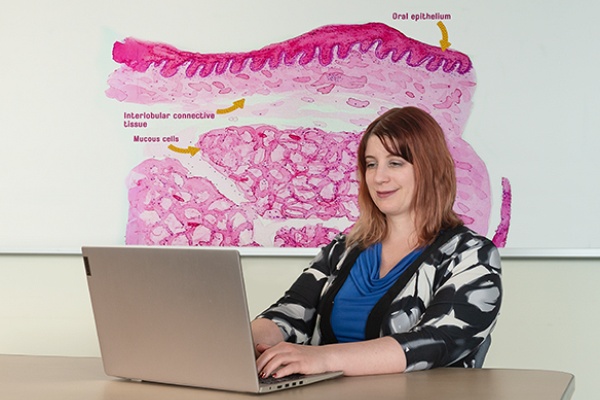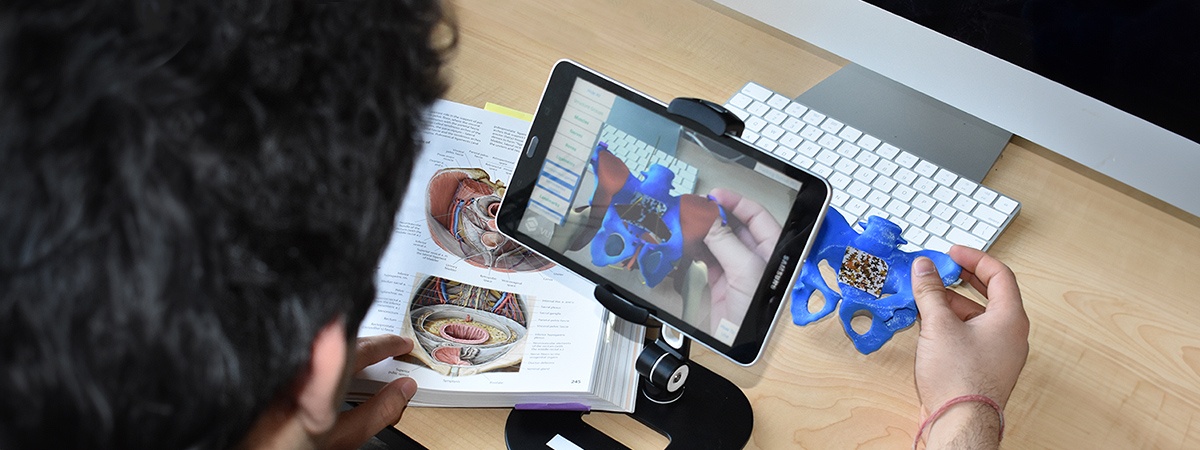The UBC Certificate in Biomedical Visualization and Communication is an 11-month, part-time, 100% online instructor supported program with real-time classes, virtual labs, workshops and project team working sessions.
You progress through all courses with a single group of peers (a cohort). Cohort numbers can vary but will be no more than 40 students. The program is designed to promote peer learning and collaboration, and offers you an opportunity to grow, learn and build relationships with a consistent group of people throughout the program.
Modular online learning
Courses are made up of online learning modules released weekly that combine synchronous Zoom discussions with asynchronous readings, videos, multimedia materials, exercises, assignments, quizzes, and/or 3D and virtual labs. Each week, you complete a new module before progressing to the next.
All courses have a project-based component where students are expected to work in teams to co-create prototypes of biomedical visualization projects which requires remote collaboration with your classmates outside of class time and possibly across time zones.
During the week, you will document your learning through a weekly reflection journal and participate in online group discussions.
Throughout the year, there will also be optional real-time and virtual peer critiques, tutorials, and professional and technical workshops. Students are expected to be accountable for their learning by identifying which skills they need to develop, practicing those skills, and regularly seeking and integrating feedback to continuously improve.
Final capstone project
For the final capstone project in term 3, students work on a multidisciplinary team with their classmates and a community client partner to create a design proposal and prototype for a biomedical communication need.
This capstone course offers you an opportunity to apply all of your learning from the previous courses, and bring your unique talents, experience and perspective to the team. You not only come away with a portfolio-worthy example of your creative process, but you also gain hands-on industry experience in a realistic client scenario.
Portfolio mentorship opportunities
For students who want to create a portfolio for future job or freelance opportunities, or to prepare to enter a master’s program, we offer mentorship and guidance. You’re encouraged to communicate these goals regularly with your instructional team.
Expected effort
In terms 1 and 2, you should set aside a minimum of 15-20 hours per week to participate in online classes and to complete online learning requirements, exercises, quizzes and assignments, including remote collaboration with your peers.
For the final capstone project in term 3, you can expect to participate in weekly facilitated synchronous session where teams share progress updates with the cohort and weekly video check-ins with your faculty supervisor and client partner. Student teams are expected to manage their time and collaborate remotely outside of these mandatory sessions. Projects are presented weekly with the cohort and at the end of the term to client partners
Technology requirements
To take this program, you need access to:
- an email account
- a computer, laptop or tablet, using Windows or macOS the latest version of a web browser (or previous major version release)
- a reliable internet connection
- a video camera and microphone
You will be provided with a version of Adobe® Creative Suite if you do not own an edition. Please visit Adobe Creative Cloud for system requirements to run Adobe applications.
Art materials
Your program fees include art supplies, including notebooks, pigments, watercolour paints and pencils.
Assessment
Courses are graded as pass/fail. The work you hand in is assessed using rubrics, and some work might be evaluated by your peers. You’re also assessed on participation. Deliverables might include:
- lab assignments (individual and group work)
- sketchbook and discussion board reflections (individual)
- biomedical visualizations (individual and group work)


